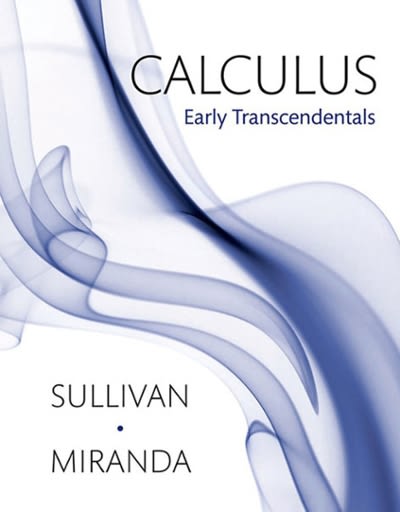Question
The CEO of a company is trying to decide between two different suppliers of recycled aluminium (Alumania and Beautinium), she is not sure which one
The CEO of a company is trying to decide between two different suppliers of recycled aluminium (Alumania and Beautinium), she is not sure which one is better so is testing for a difference in either direction. She has decided to go with the supplier that has the smallest average impurities. 35 samples are obtained from each supplier and in each sample the percentage of impurity is measured.
The results were analyzed in R via a 2-sample t-test with a 2-sided alternative hypothesis, and some of the output is summarized below (assume = 0.05 where necessary).
mean sd n Alumania 3.67 3.34 35 Beautinium 4.01 3.74 35
Two Sample t-test
data: impurity by supplier
t = -0.413, df = 68, p-value = 0.6895
alternative hypothesis: true difference in means is not equal to 0 95 percent confidence interval: -2.03 1.35
Levene's Test for Homogeneity of Variance (center = "median")
Df F value Pr(>F) group 1 0.1977 0.658 68
Let 1 and 2 denote the mean amount of impurities from the suppliers "Alumania" and "Beautinium" respectively, and 12 and 22 be the respective variances.
1 Whats the relevant null and alternative hypotheses that have been tested in this analysis.
| .a | H0: 1 - 2 = 0 H1: 1 - 2 > 0 |
| b | .H0: 2 - 1 = 0 H1: 2 - 1 < 0 |
| c | H0: 1 - 2 = 0 H1: 1 - 2 0 |
| d | H0: 1 - 2 = 0 H1: Alumania has less impurities than Beautinium |
2 What is the pooled estimate of the standard deviation (correct to 3dp)?
3
If you were asked to use this analysis to answer the question of which supplier of aluminium to use, what is your conclusion?
a.
Aluminia has a lower sample mean of impurities, so we should use Aluminia.
b.
p = 0.658 > 0.05 so we cannot reject H0, ie there is no significant evidence that there is any difference in the amount of impurities produced by the two suppliers.
c.
p = 0.6895> 0.05 so we cannot reject H0, ie there is no significant evidence that there is any difference in the amount of impurities produced by the two suppliers.
d.
Beautinium has a higher sample mean of impurities, so we should use Beautinium.
4
How would we interpret Levene's test in this instance?
| a. | since n > 30 the Central Limit Theorem applies and we don't have to worry about Levene's Test. | |
| b. | 0.658 > 0.05 so no significant evidence to doubt the normality assumption. | |
| c. | 0.658 > 0.05 so no significant evidence to doubt the independence assumption. | |
| d. | 0.658 > 0.05 so no significant evidence to doubt the equal variance assumption. |
5
Following on from this analysis, if I were to calculate a confidence interval for the mean impurities in samples from Alumania, what degrees of freedom would I use in my critical value (correct to 0 dp)?
Step by Step Solution
There are 3 Steps involved in it
Step: 1

Get Instant Access to Expert-Tailored Solutions
See step-by-step solutions with expert insights and AI powered tools for academic success
Step: 2

Step: 3

Ace Your Homework with AI
Get the answers you need in no time with our AI-driven, step-by-step assistance
Get Started


